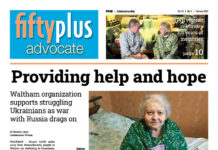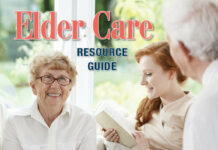By Stephanie Nano
NEW YORK — Routine screening for osteoporosis should include all younger postmenopausal women who have at least the same chance of a bone break as an older woman, a government task force said July 5.
Also, for the first time, the group weighed whether men should be checked for the bone-thinning disease, but it decided there wasn’t enough evidence to recommend for or against the screening.
The U.S. Preventive Services Task Force’s draft guidelines widen its 2002 advice, when it first said that all women over 65, plus those 60 to 64 at higher risk for fractures, should get a bone density test.
The task force now says all younger postmenopausal women should get checked if their risk of a broken bone is the same or greater than the average 65-year-old woman. Factors that can increase risk include low weight, certain drugs, smoking, heavy alcohol use and a parent who broke a hip.
“The majority of the evidence supports screening and treatment of osteoporosis in postmenopausal women,” the task force wrote. “The evidence for primary prevention in men is lacking and future research is needed.”
In a break from previous practice, the independent, government-appointed panel posted a draft of the guidelines online Monday to allow for public comment. The task force had been considering the move, but the reaction to its controversial mammogram guidelines last fall spurred the group to open the process earlier, said Dr. Ned Calonge, head of the panel.
Also Monday, the Annals of Internal Medicine published a review done for the task force of the latest research on screening methods, bone-building drugs and tools to calculate one’s risk of low bone density and fractures.
Since the 2002 advice, a number of new osteoporosis drugs have been released and heavily advertised, such as Genentech’s Boniva, promoted by actress Sally Field.
Osteoporosis weakens bones and leads to painful and crippling fractures primarily in the hip, spine and wrist. In women, it’s mostly caused by a drop in bone-strengthening estrogen after menopause. The government estimates that 10 million Americans have the disease and half of all women will suffer an osteoporosis bone break in her lifetime.
The task force used a Web-based risk calculator called FRAX — http://www.shef.ac.uk/FRAX — that estimates one’s odds of a fracture within 10 years. It shows women as young as 50 may meet the threshold for a bone test depending on their risk factors, the panel said.
A bone-mineral density X-ray is the one most frequently used tests to check for bone loss, and many women start getting the scans once they reach menopause. How frequently the checks are made varies. The task force said there’s not enough evidence to say how often they should be done, but that a couple of years between tests are needed.
One large study found no advantage to repeating the test even after eight years, said Dr. Heidi Nelson, who led the scientific review done at the Oregon Evidence-based Practice Center at the Oregon Health and Science University in Portland.
“So we can really lay off a lot of these repeat screening tests,” she said.
Other medical or advocacy groups support screening women over 65, and generally advise tests for younger women based on risk factors. The National Osteoporosis Foundation recommends screening men over 70; the American College of Physicians says doctors should check older men for risk factors. — AP
___
Online:
Task Force: http://www.ahrq.gov/clinic/uspstfix.htm
Annals: http://www.annals.org












